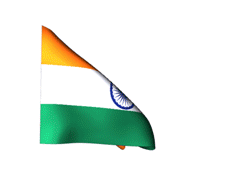Introduction
“A
library is not a building stacked with books – it is a repository and source
of information and ideas, a place for
learning and enquiry, and for the generation of thought and the creation of new
knowledge.”
(National
Knowledge Commission 2005)
Ø Aims
and Objectives Of the Library
Supporting
and enhancing educational goals as outlined in Kendriya Vidyalaya Sangathan’s
mission and curriculum.
Be
the knowledge hub of the school and disseminate knowledge as widely as
possible.
Provide
a curriculum-based, flexibly scheduled, open access learning environment that
accommodates all learners.
Facilitate
creation of new knowledge.
Facilitate
optimal use of knowledge by all staff and students.
Encourage
and foster reading habit among staff and students.
Ø
Library services to primary children in Kendriya Vidyalayas
Kendriya
Vidyalaya Sangathan gives due importance to its school libraries. In the
line of CBSE School Library Guidelines, it charted out a policy for the
vidyalaya libraries in 2008. To provide library services to primary children,
there is a provision of class libraries from Class One to Five. The Common
Minimum Programme (CMP) for Qualitative Improvement of the Primary
Education also emphasizes the functioning of class libraries.
Ø
Library as classroom activity in Primary Education
Library
Activities : making them read to learn
The
National Curriculum Framework, 2005 gives greater importance to activity
oriented teaching and learning. KVS calls for proficiency in languagesin primary
education along with the former aspect. Where as the CMP for Qualitative Improvement of the
Primary Education suggests to design thepedagogical practices in such a way
that the child should transit from
‘learning
to read’ to‘reading to learn’.
PRIMARY SCHOOL LIBRARY

The Lycée Jules
Verne’s pre- and primary school library has more than 16,000 works (picture
books, novels and chapter books, comics, documents, short stories, plays and
magazines).
They are all electronically registered with the ‘BCDI” system which allows the user to swiftly locate each work by title, author or subject, and to manage loans by user.
They are all electronically registered with the ‘BCDI” system which allows the user to swiftly locate each work by title, author or subject, and to manage loans by user.
Every pre-and primary
school class spends time in the library, and since the school has adopted a
bilingual teaching formula, students take out books, picture books and
magazines weekly

The purpose of the fun activities offered in the library, which include handling and manipulating books, the challenge of reading, network reading, etc., is to bestow on them a love for reading from an early age.
These fun times of
learning teach children to search for information, autonomy, curiosity, reading
and oral expression.
When planning your library there are many things to think about.
Do you have enough
shelf space?
How will students
check out books?
Class Library
Reading
is an important competency of language, which requires a great deal of
practice. There are several ways to develop this habit like by encouraging the
children to read newspapers, story book, poems, rhymes, general knowledge etc.
To develop reading interest among the children we need to provide them the
books of their choice, at a place most convenient to them and certainly other
than the textbook.
THE NEED OF CLASS ROOM LIBRARY:
In
most of the schools books other than the textbooks are available only in the
school library and there is a period for using them. Primary children hardly
find any time to go to the library read them. Such fixed periods may be OK for
the senior students but for the primary child that may not work as there is
very possibility that a child may not be in a mood to read them in the
specified period or the books required by him may not be available due to
already issued to some other student or there is every possibility that books
needed by the toddlers may not be in abundance in the main library. This
situation gives rise to the need of separate library for the primary children
according to their age, their mental level and need.
HOW A CLASS LIBRARY CAN
BE ARRANGED:
1.
Different kind of books can be stored
in colourful boxes and glass cupboard.
2.
Books should be displayed for easy access of
the children.
3.
Different magazines such as Bal
Bhaskar, Chanda Mama, Champak, lot pot etc. Can be kept in cloth holders with
several pockets mounted on a wall.
4.
Selection of the books should be as per
the choice and the mental level of the children.
5.
There should be reference books like
dictionaries, children encyclopedias, activity books like language games etc.
Mathematical Games, Puzzles, Magic books, Story books, General knowledge books,
Picture books, Fairy tales, Collection of proverbs etc. in the classroom
library.
6.
Children can be provide books during
library periods, arrangement period or any time when the child want to study
after completing the class activity.
7.
There should be rational exchange of
books among the section and classes.
8.
Record of books read by student should
be maintained.
9.
The children should be motivated to
write book reviews and it should be collected.
Conclusion
A child in his growing age needs books and
libraries. It enriches his/her reading experiences and develops skills as
independent learners. Age specific strategies should be followed to introduce
them the information skills that should be practised throughout their school
career. A well planned Class library programme, functional class libraries,
creatively designed and well executed library activities and proper evaluation
make students lifelong learners. CMP for Qualitative improvement of the Primary
Education gives ample space for libraries. The teachers and librarians have to make
it a reality.
---------------

